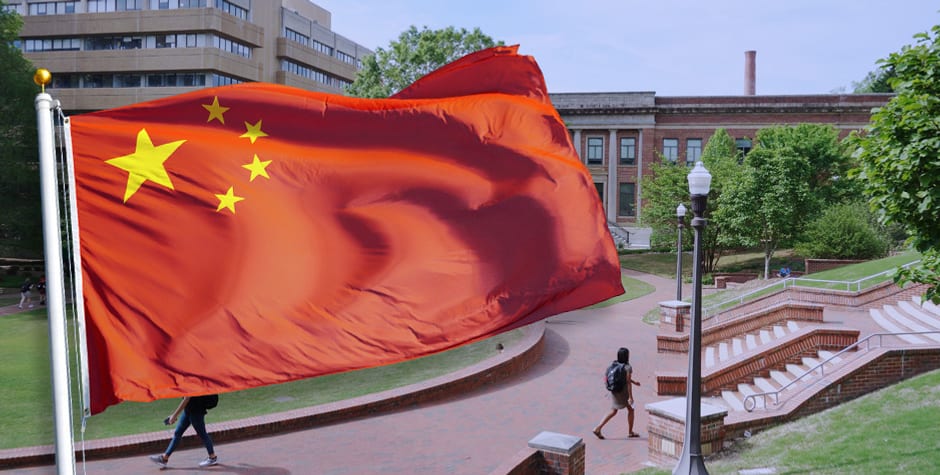Communist China’s $1 Billion Takeover of American Campuses
Listen tothis article
Higher education in the United States is at a crossroads. From the radical antisemitism infecting far too many of our colleges and universities to the woke assault on free thinking, these dangerous ideologies are finally starting to come under real scrutiny thanks to the initiative of President Trump and Secretary of State Marco Rubio.
But as Secretary Rubio’s recent actions on visas have highlighted, one of the greatest challenges to our universities is the significant influence of Communist China (CCP). Whether from direct funding of research programs or by exporting students to study strategically important STEM subjects and work on dual-use technologies, China has used numerous avenues to expand its influence, gather intelligence, and steal our intellectual property.
In America, our reverence for freedom of speech has created higher education institutions with an incredible track record of innovation and consequential research – particularly in science and technology. This has attracted students and faculty from around the world – and when those individuals are coming in order to advance their field of study, it’s mutually beneficial.
Unfortunately, China has used this openness against us to export propaganda and influence, steal our intellectual property, and undermine America’s national security. As the House Select Committee on the CCP put it, university STEM programs have become a “Trojan Horse for Beijing, providing unrestricted access to our top research institutions and posing a direct threat to our national security.”
We’ve long known that China invests a huge amount of energy into stealing America’s intellectual property. In areas of research with national security implications – often attached to America’s leading universities – this becomes a real threat. Through a mix of incentives and coercion, Beijing uses its operatives to access research in fields ranging from quantum computing to artificial intelligence to biotechnology – technologies that could determine the outcomes of future conflicts.
The Chinese regime doesn’t allow Chinese students to go to school in America out of the goodness of their hearts. At a minimum, their goal is for students to receive the best training possible in a given field and bring that expertise back to China. But at worst, they seek to induce or coerce students into spying.
Beyond direct intelligence gathering, Beijing uses its access to American campuses to curb academic freedom and police its own citizens abroad. For example, the government funded a network of innocuous-seeming “language and cultural centers” known as Confucius Institutes, which were used as a means of censoring views critical of China, recruiting potential spies, and disseminating propaganda. Similar student organizations have harassed Chinese students and faculty for heterodox views, while CCP security services work behind the scenes to enforce this climate of intimidation.
The financial dimension of this influence campaign cannot be ignored. Over the past decade, Chinese funding to American universities has exceeded one billion dollars. Many institutions have become financially dependent on Chinese students paying full tuition, creating powerful incentives for administrators to look the other way when confronted with evidence of malign influence and to practice self-censorship on China-related issues.
I experienced this firsthand in 2020, when I was set to deliver a speech at MIT on Chinese influence in academia but was asked not to do so out of fear of causing offense. Consider this: If they were willing to ask the sitting Secretary of State to censor himself, imagine the calculations a junior professor without tenure would have to make before voicing an opinion. In the end, I made those remarks at Georgia State – warning the audience, “If we’re not honest about what’s taking place, we’ll get schooled by Beijing.”
I’m proud of the progress we made during my time as Secretary of State in cracking down on CCP espionage, in convincing colleges to shutter their Confucius Institutes, and in raising awareness of the threat posed by China to academic freedom and to research with national security implications. But we still have a long way to go.
The stakes couldn’t be higher. At a time when technological superiority will determine global leadership, America has been training our primary strategic competitor’s next generation of scientists and engineers while giving them access to our most advanced research.
Breaking this cycle requires sustained effort on multiple fronts. First, Congress must strengthen oversight of foreign funding and research partnerships, with particular scrutiny of projects with dual-use potential. Second, we need robust counterintelligence capabilities specifically focused on academic settings. The FBI and other agencies should work closely with universities to identify and counter espionage attempts while preserving the open research environment that makes American universities so successful.
University administrators must also rediscover their spine. Trustees and presidents cannot remain silent when that freedom is threatened by authoritarian regimes. And finally, we need honest conversation about the trade-offs involved. Protecting our national security may mean accepting some financial costs and reducing certain international partnerships. These are prices worth paying to preserve American technological leadership and our national security.
The Chinese Communist Party views American universities not as partners in advancing human knowledge but as targets for exploitation and control. Our response must be equally clear and equally determined.
